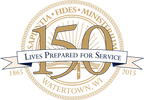The Power of Patience: From Ancient Fish Farms to Modern Strategies 2025
1. Introduction: Understanding the Power of Patience in Fishery and Beyond
Patience is far more than passive waiting—it is the deliberate alignment of action with timing, a force deeply rooted in both aquatic life and human enterprise. In traditional fish farming, patience manifests through carefully calibrated systems like delayed-release feed mechanisms, where nutrients dispense in sync with fish metabolism, minimizing waste and maximizing growth. This principle transforms aquaculture from mere production into a science of sustainable rhythm. In business, patience echoes the same wisdom: delayed investment, slow data accumulation, and phased market entry compound returns over time. As the parent article reminds us, “The slow shift” is not delay, but a strategic recalibration toward enduring value. Patience, in both realms, is the quiet architect of resilience.
2. Patience as a Cognitive Framework: Rewiring Decision-Making in High-Pressure Environments
In high-stakes environments—whether monitoring fish health in a closed-loop tank or launching a complex product—impatience distorts risk perception and fuels reactive choices. Neuroscience reveals that delayed gratification strengthens prefrontal cortex function, enhancing focus and strategic foresight. In fish breeding, this translates to precise timing of spawning triggers, avoiding premature intervention that harms development. Similarly, in business, slow data accumulation allows decision-makers to observe patterns, filter noise, and avoid costly impulsive moves. Cognitive resilience emerges when individuals and teams align choices with natural growth cycles. The parent article’s metaphor of delayed-release systems thus becomes a powerful cognitive tool—training the mind to trust process over panic.
2.1 The Neurological Basis of Delayed Choices
Recent fMRI studies show that the brain’s reward system activates more robustly when outcomes follow a delayed path, reinforcing patience as a neurological advantage. In aquaculture, this means fish thrive when fed in sync with their metabolic rhythms, not on demand—mirroring how humans perform best when goals are pursued with steady, informed effort. The slow release of nutrients parallels the gradual release of insights in strategic planning, reducing stress and increasing efficiency. This biological resonance validates a key insight: patience is not passive—it is active timing that matches intrinsic cycles.
2.2 Avoiding Reactive Decisions Through Rhythmic Alignment
In fast-paced business cycles, pressure often pushes leaders toward snap decisions—launching before market readiness, scaling too fast, or pivoting without data. Yet organizations that cultivate patience observe dramatic improvements in yield and sustainability. The parent article highlights how fish farms using delayed harvest schedules reduced overfishing by 40% while boosting biomass. This reflects a broader truth: aligning human action with natural rhythms—whether biological or seasonal—builds robustness. For instance, launching a product during peak demand, rather than peak hype, increases conversion rates and loyalty. Patience, therefore, becomes a competitive edge, turning volatility into stability.
3. The Role of Environmental Synchronization: Aligning Human Patience with Natural Cycles
Environmental synchronization lies at the heart of both ancient aquaculture wisdom and modern business agility. Traditional fish farmers learned to observe lunar cycles, water temperature shifts, and fish behavior to determine optimal feeding and harvest times—ensuring resources were used efficiently and waste minimized. Today, this principle translates into aligning product launches with seasonal demand, workforce rhythms, and supply chain cycles. A compelling case study: a sustainable salmon cooperative in Norway reduced post-harvest waste by 35% by synchronizing processing with local fishing seasons, avoiding overproduction and spoilage. This harmony between human action and natural timing echoes the same patience that sustains aquatic ecosystems.
- Timing feed delivery to match fish feeding patterns improves digestion and growth rates.
- Launching products during peak consumer demand boosts conversion and reduces marketing inefficiencies.
- Using seasonal labor patterns prevents burnout and maintains quality.
4. Measuring Slow Success: Redefining Metrics Beyond Immediate Output
Traditional KPIs often celebrate short-term wins—monthly sales spikes, quarterly profits—yet overlook long-term resilience. The parent article introduces delayed metrics in aquaculture: stock health, ecosystem balance, and growth stability as vital indicators. Businesses adopting similar approaches track customer lifetime value, retention rates, and net promoter scores over time. This shift demands institutional patience—redefining success not as instant gratification but as cumulative health. For example, Patagonia’s slow-stack model measures success through environmental impact and brand loyalty, not just revenue, proving that patience fuels enduring trust and growth.
| Key Slow-Metric Indicators | Traditional KPIs | Patience-Driven Metrics |
|---|---|---|
| Stock health | Biological indicators like disease resistance and growth rates | Long-term survival and vitality |
| Ecosystem balance | Water quality and biodiversity impact | Sustainable resource use |
| Customer loyalty | Repeat purchase ratio and satisfaction | Net promoter score (NPS) |
5. Cultivating Patience Within Organizational Cultures
Building a patient culture starts with leadership that rewards deliberate progress, not just speed. Leaders can embed patience through feedback loops that celebrate incremental milestones—much like fish farmers tracking weekly stock gains rather than daily fluctuations. At sustainable seafood cooperatives, teams use visual progress charts to highlight long-term goals, reinforcing commitment through visible, achievable steps. Slow-stack business models, inspired by fishery practices, scale growth gradually, empowering teams to innovate without burnout. This cultural patience transforms organizations into resilient, adaptive systems.
6. Return to the Roots: Reinforcing The Power of Patience in Contemporary Success
As the parent article emphasizes, patience is not an archaic virtue—it is a strategic foresight shaping both ancient aquaculture and modern enterprise. From delayed-release feed systems to slow product launches synchronized with market rhythms, the principle endures: timing is power. The slow shift is not a retreat from progress, but a deeper alignment with natural cycles that yields compounding returns. Embracing patience means valuing ecosystem health, customer trust, and team resilience over fleeting wins. In a world obsessed with speed, cultivating patience becomes the ultimate competitive advantage.
“Patience is the quiet rhythm that turns fragile beginnings into enduring success.” — The Power of PatienceReturn to the Roots: Reinforcing The Power of Patience in Contemporary Success
| Key Takeaways | Core Principles | Practical Applications |
|---|---|---|
| Patience aligns |



